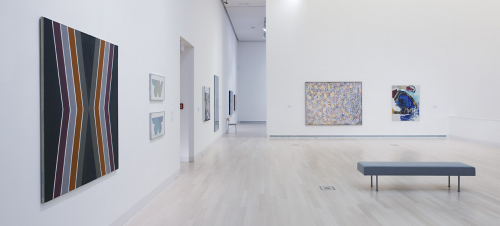László Lakner made his photorealist painting by enlarging a photograph found in the major Soviet illustrated magazine Orgoniok (no 49., 1972.) featuring Kazakh cotton-pickers. Wearing coloured shirts and uniform caps, the strong and lively men smile happily for the camera from the top of a massive cotton bale; the smaller canvas accompanying the painting features the title and data of the magazine in Cyrillic letters. Photorealism in Eastern Europe differed from the one in Western Europe in terms of the reality it represented, which was quite different from consumer society, but the “truth” on which the paintings were based was also not self-evident. Based on socialist ideals but in practice defined by a one-party dictatorship, the regime was built on lies and hushing-up, and it was mainly the privilege of those in possession of power to represent the common worker as happy and content. The photograph chosen by Lakner was part of the Soviet propaganda, which was meant to point out the achievements of both the Soviet Union’s ethnic policy and its economy: the problem-free assimilation of Kazakhs into the empire and the successful Soviet economic policy. The “reality” was entirely different: Russianization and collectivization entailed the liquidation of national heritage and traditional economic forms, and the forcible production of cotton, the “white gold”, led to an ecological disaster (the drying up of the Aral Sea and the related public health hazard) among other things. Lakner’s painting is an example of the controversial relation of illusion and reality through the phases of the choice, use, and analysis of a photographic document. K.Sz.

